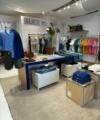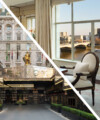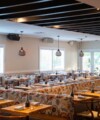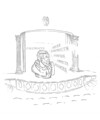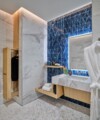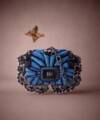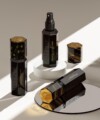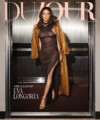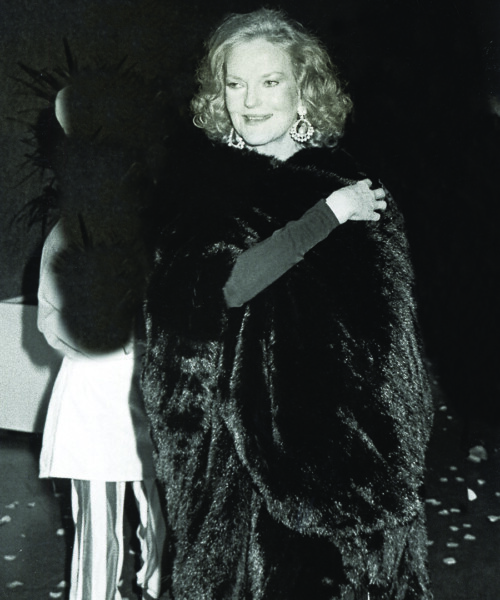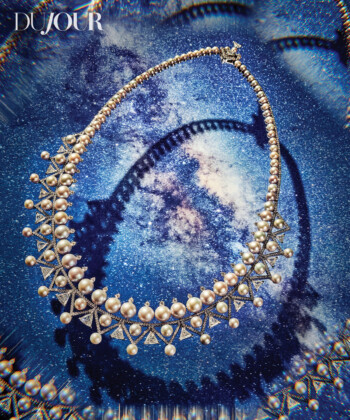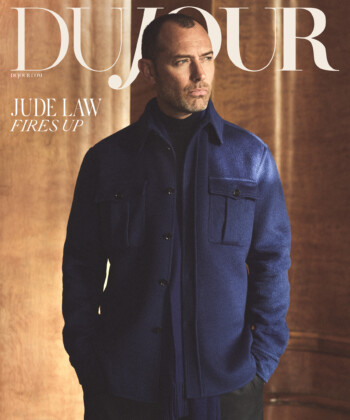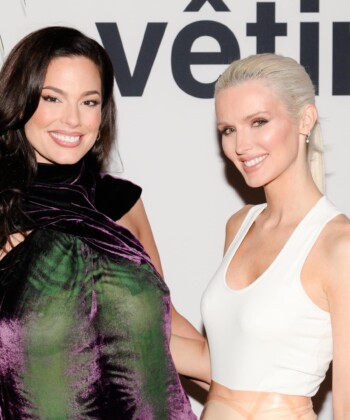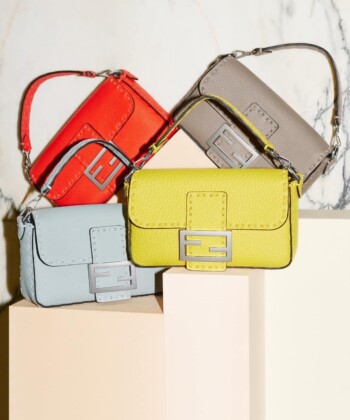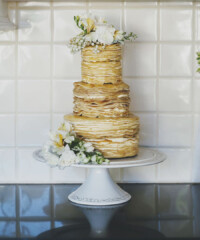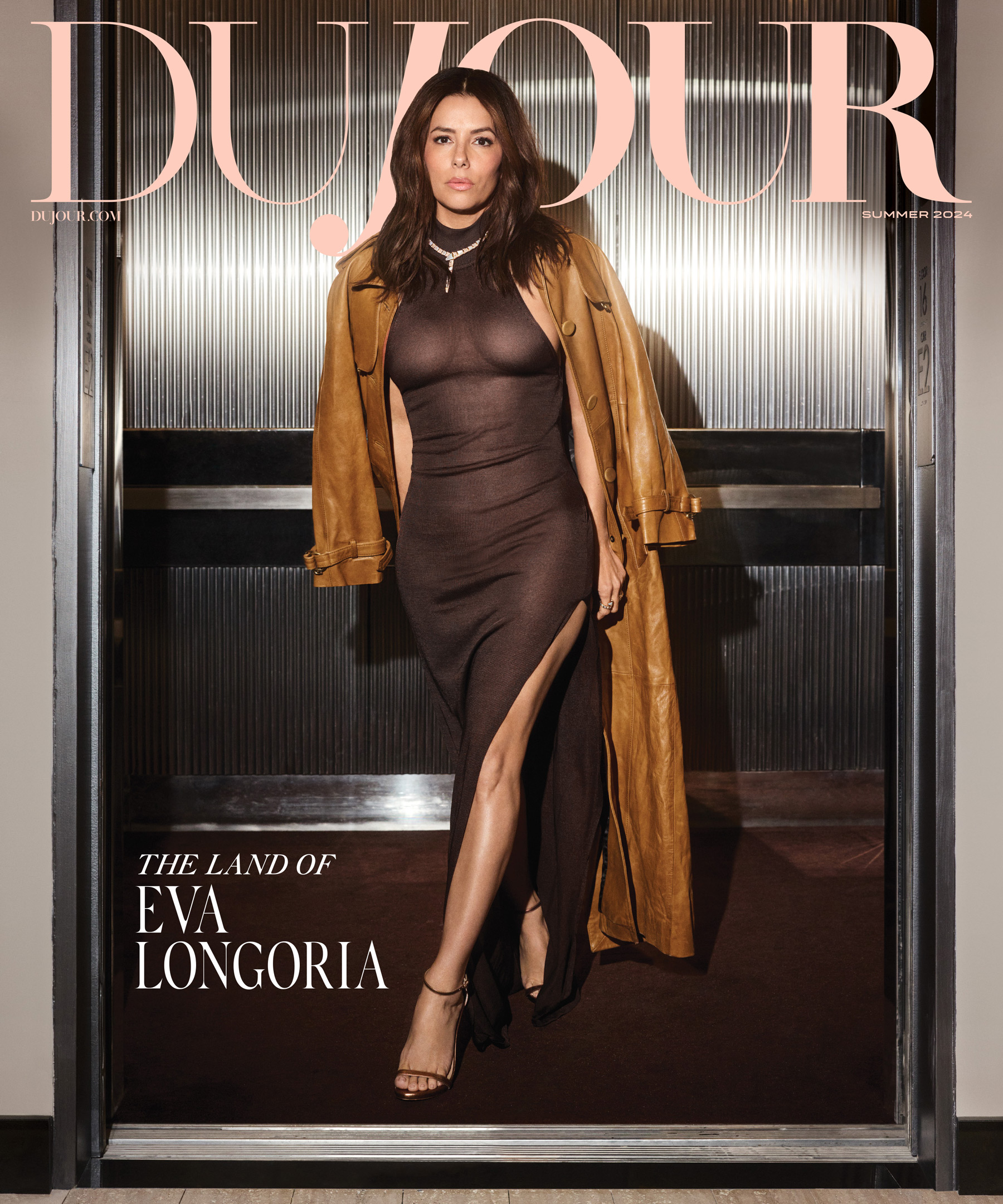If your fall getaway plans have you headed to New England, a stop at Rough Point, the Newport, R.I. home of Doris Duke, is a must—especially if you love emeralds and diamonds. There, a special exhibition titled “Designing for Doris: David Webb Jewelry and Newport’s Architectural Gems” highlights contemporary recreations of several David Webb pieces belonging to the late American tobacco heiress. Webb enjoyed a unique designer/client collaboration with Duke during the 1950s and ’60s, one that merged his inimitable sense of line and form with Duke’s glamorous style (think: pink Jean Patou pantsuits, striped harem pants and feathered capes), and the exceptional gemstones she’d inherited.

Turquoise and sapphire necklace designed for Doris Duke (courtesy of the designer)
Names like Doris Duke, Elizabeth Taylor, and Jacqueline Kennedy Onassis are essential to appreciating the brand’s prestigious heritage. But, now, the iconic jewelry—bold sautoirs hung with enormous gemstone and enamel pendants, dramatic cuffs and door-knocker earrings—is also attracting new crop of stylishly dressed celebrities.
For example, not long after “Designing for Doris” opened in April, Rihanna was spotted at Coachella wearing a gold and diamond bangle. Poppy Delevingne wore a David Webb peridot suite to the Met Gala in May. Actress Sarah Paulson was photographed wearing turquoise enamel earrings and an opal ring for the June cover of InStyle.

Rihanna: Dimitrios Kambouris/Getty Images
“David Webb has always been inspired by beautiful, captivating women, and we are very proud to carry on this tradition,” says co-owner Mark Emanuel, a former estate jewelry dealer who acquired the company with business partner Robert Sadian in 2010. “The power of celebrity is as important today as ever.”
In the 27 years between founding the company in 1948 and his death in 1975, Webb created more than 40,000 design concepts, many of which were never produced. “There’s a distinct David Webb vocabulary that informs our contemporary designs,” says Emanuel, who drives which jewels get resurrected from the archives or tweaked for a modern audience. “Whether we’re re-releasing a collection or creating a new couture piece, those elements are always foundational.”
“David Webb is definitely experiencing a renaissance,” observes Robin Katz, a New York City antique jewelry dealer, collector and consultant. “Their creative direction, marketing and social media all add up to a forceful presence in the jewelry world right now. The brand exudes a youthfulness that was absent for a long time.”
At the 2018 Couture jewelry show in Las Vegas, the house set up camp in a poolside villa at the Wynn hotel, the perfect backdrop for showcasing a new series of bracelets. Based on an original sketch from the 1970s, the updated versions dangle beads of coral, lapis, turquoise, cultured pearls, brilliant-cut diamonds, and tumbled emeralds in an array of chic combinations.
“There’s a lot of 1970s influences because the 1970s—both in terms of style and jewelry scale—are very ‘now’ and they’re very much part of today’s vernacular,” says Emanuel.
At the same time, the jewelry remains undeniably timeless. “It’s unapologetic, speaking to courage and confidence,” he says, “and most of the time, a good David Webb piece can be literally recognized from across the room.”
Not to mention the red carpet. “I just love the gold 1970s flair of Webb,” says L.A.-based celebrity stylist Petra Flannery, who counts Emma Stone and Zoe Saldana as clients. One of her favorite red carpet moments of late was the look she created for Amy Adams at the 2017 BAFTA awards: an emerald green Tom Ford gown worn with a pair of the jeweler’s most exquisite emerald-and-jade earrings.

AmyAdams: Samir Hussein/Getty Images
Flannery tends to pull a combination of both current and vintage David Webb pieces. “The newer pieces are quite reminiscent of the vintage, and the younger generation is a sponge for the past,” she says. “It is, of course, the vintage that makes David Webb so iconic—for example, their animal motifs.”
The Zebra bangle, a masterwork in 18-karat gold and hand-painted enamel, stands out as one of the house’s most highly recognizable and coveted styles. The original design debuted in 1963 (Diana Vreeland owned one) and since then has lent its black-and-white stripes to everything from brooches to pendant earrings.
The Zebra presides over the company’s crystal chandelier-lit workshop, projected onto the window shades like a glowing hologram or a friendly apparition. There, several floors above the Madison Avenue boutique and offices, each piece is handmade by master stone setters and bench jewelers; some have been with the firm for more than 50 years, or are descendants of those who worked for Webb himself.

New brocade bracelet
“The animal bangles are great statement pieces—iconic, recognizable and wearable,” says Katz. “As such, they’re bound to retain their value over time.”
Clearly the nearly $70,000 price tag of the Zebra bracelet lands it squarely in connoisseur territory, but if you’re a first-time David Webb buyer? Start with Tool Chest—the Bent Nail earrings and Nail Ring refer back to a collection from 1971 and feature the house’s signature hammered gold. Both retail for less than $3,000.
And take Katz’s advice: “If one is truly a collector and passionate about the jewelry they choose, buying into an iconic brand goes a long way towards feeling that their money is spent wisely.”
Main image: Ron Galella/Getty Images


